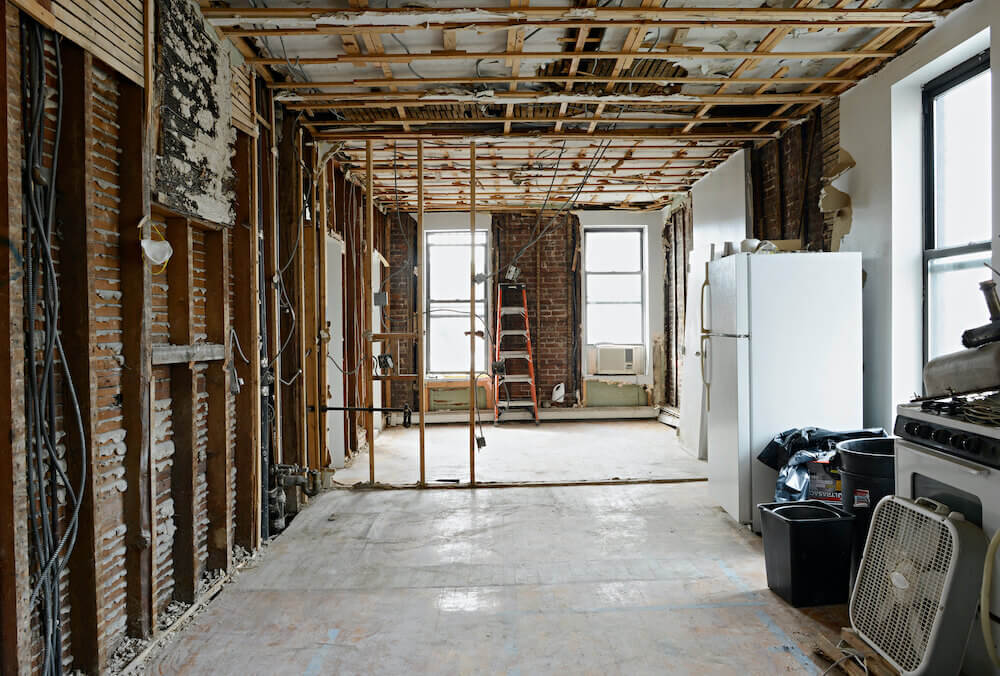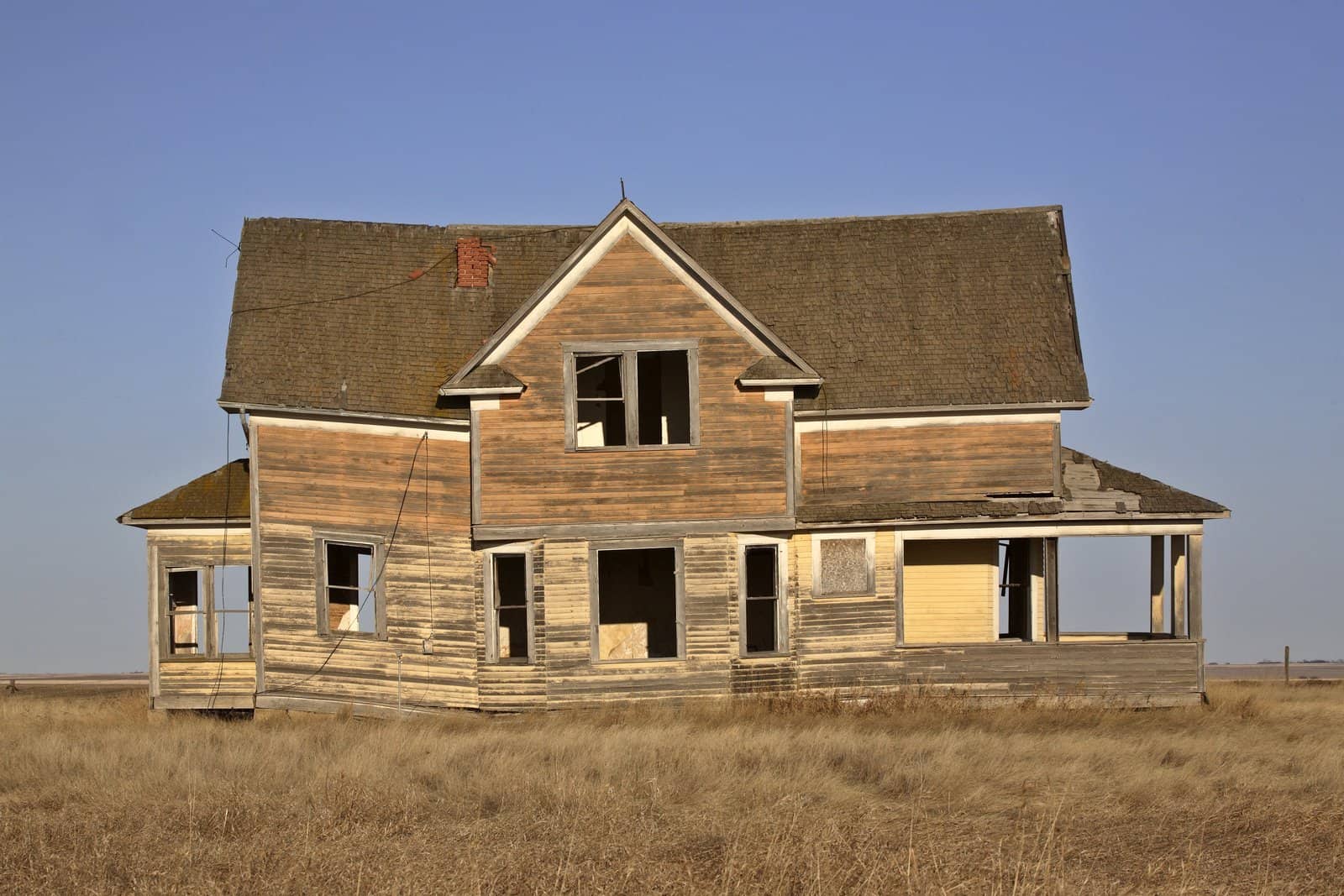
What Does It Mean to Gut a House?
When you gut a house, you’re essentially stripping it down to the bare bones. This means removing everything inside—walls, flooring, fixtures, cabinets, appliances, plumbing, and electrical systems. Gutting is typically done when a home is in poor condition, outdated, or being remodeled for a completely new layout. The process gives you a blank canvas to work with and allows you to rebuild the home to your exact specifications.
Gutting is also common in homes that have suffered damage from mold, water, or fire. In these cases, mold remediation or water damage restoration is often the first step before the home can be gutted and rebuilt.
How Much Does It Cost to Gut a House?
The cost to gut a house can vary widely, but on average, homeowners can expect to pay between $15,000 and $50,000 or more for a complete gut job. Several factors influence the total cost, including the size of the home, the extent of the demolition, the condition of the house, and the cost of labor in your area.
Typical Cost Breakdown:
- Demolition: $2,000 to $7,000, depending on the size of the home and the amount of demolition required.
- Debris Removal: $500 to $2,000 for hauling away debris, depending on the amount and type of material.
- Structural Repairs: $5,000 to $20,000 for repairing or replacing structural components such as walls, beams, or foundations.
- Electrical and Plumbing: $3,000 to $10,000 for updating or replacing wiring and pipes.
- Flooring, Drywall, and Insulation: $10,000 to $25,000, depending on the type of materials used and the square footage of the home.
Other Factors That Impact the Cost to Gut a House:

Several additional factors can affect the overall cost of gutting a house:
1. Size of the Home
The larger the home, the more expensive it will be to gut. Larger homes require more labor, materials, and time, which will drive up costs. If you’re gutting a smaller home or only a portion of the home, you can expect the cost to be on the lower end of the spectrum.
2. Condition of the House
The condition of the house can have a significant impact on gutting costs. If the home has suffered water damage, mold, or fire damage, additional remediation and repairs may be necessary. This can add thousands of dollars to the overall cost, especially if there’s structural damage that needs to be addressed.
3. Labor and Location
Labor costs vary depending on where you live. If you’re located in a high-cost area, such as a major city, you can expect to pay more for skilled labor. In contrast, rural areas or regions with lower labor costs may offer more affordable options.
4. Permits and Inspections
Before starting a gut renovation, you’ll need to secure the necessary permits, which can range from a few hundred to a few thousand dollars, depending on your location. Inspections may also be required during the process, adding to the overall cost. Always check with your local building department to ensure you’re following the proper procedures.
5. Electrical and Plumbing Upgrades
Many older homes require upgrading or replacing outdated electrical wiring and plumbing systems, which can significantly increase the cost of gutting the house. It’s essential to account for these potential expenses when budgeting for your project.
Tips for Reducing the Cost of Gutting a House

Gutting a house can be expensive, but there are ways to manage your budget and reduce costs. Here are some tips for cutting down on expenses without sacrificing quality:
1. DIY Some of the Demolition
If you have the skills and tools, consider doing some of the demolition work yourself. Tearing down drywall, removing fixtures, and pulling up flooring are tasks that many homeowners can handle. Just be sure to leave electrical and plumbing work to the professionals to avoid costly mistakes.
2. Shop Around for Contractors
Get multiple quotes from contractors to ensure you’re getting the best price for the work. Don’t be afraid to negotiate, and ask for references to make sure you’re hiring a reputable professional.
3. Reuse Salvageable Materials
If any materials in the home are still in good condition, such as hardwood floors, cabinetry, or fixtures, consider reusing them in your renovation. This can help save money on materials while still giving your home a fresh new look.
4. Prioritize Your Renovation
If your budget is tight, focus on gutting the areas of the home that need it most, such as kitchens and bathrooms. These rooms often provide the best return on investment, and you can always tackle other areas later.
Is Gutting a House Worth the Cost?
Gutting a house can be a significant investment, but it’s often worth the cost in the long run. If you’re dealing with an outdated home, a gut renovation can modernize the space and increase its resale value. It’s also an excellent option for homes that have suffered significant damage from mold, water, or fire. The key is to plan carefully, set a realistic budget, and work with professionals who can help you navigate the process.
If you’re unsure whether a gut renovation is the right option for you, consider consulting with a contractor or restoration specialist to assess the condition of your home and provide recommendations based on your needs and budget.
FAQ
| Question | Answer |
|---|---|
| How long does it take to gut a house? | On average, it takes 1 to 3 months to gut a house, depending on the size of the home and the extent of the demolition and repairs. |
| Do I need a permit to gut a house? | Yes, you’ll likely need a permit to gut a house. Check with your local building department for the specific permits required in your area. |
| Can I live in the house while it’s being gutted? | In most cases, it’s not safe or practical to live in the house while it’s being gutted, as the work can be noisy, dusty, and hazardous. Consider making alternative living arrangements during the renovation. |
| How much does it cost to gut a small house? | For a smaller home, the cost to gut can range from $10,000 to $30,000, depending on the scope of the project and the condition of the house. |
| Can I reuse any materials after gutting a house? | Yes, if certain materials like hardwood floors, cabinets, or fixtures are still in good condition, you can reuse them in your renovation to save money. |
If you’re planning a gut renovation or need help with mold remediation or water damage repair, contact Citywide Mold Mitigation for expert services and advice.

